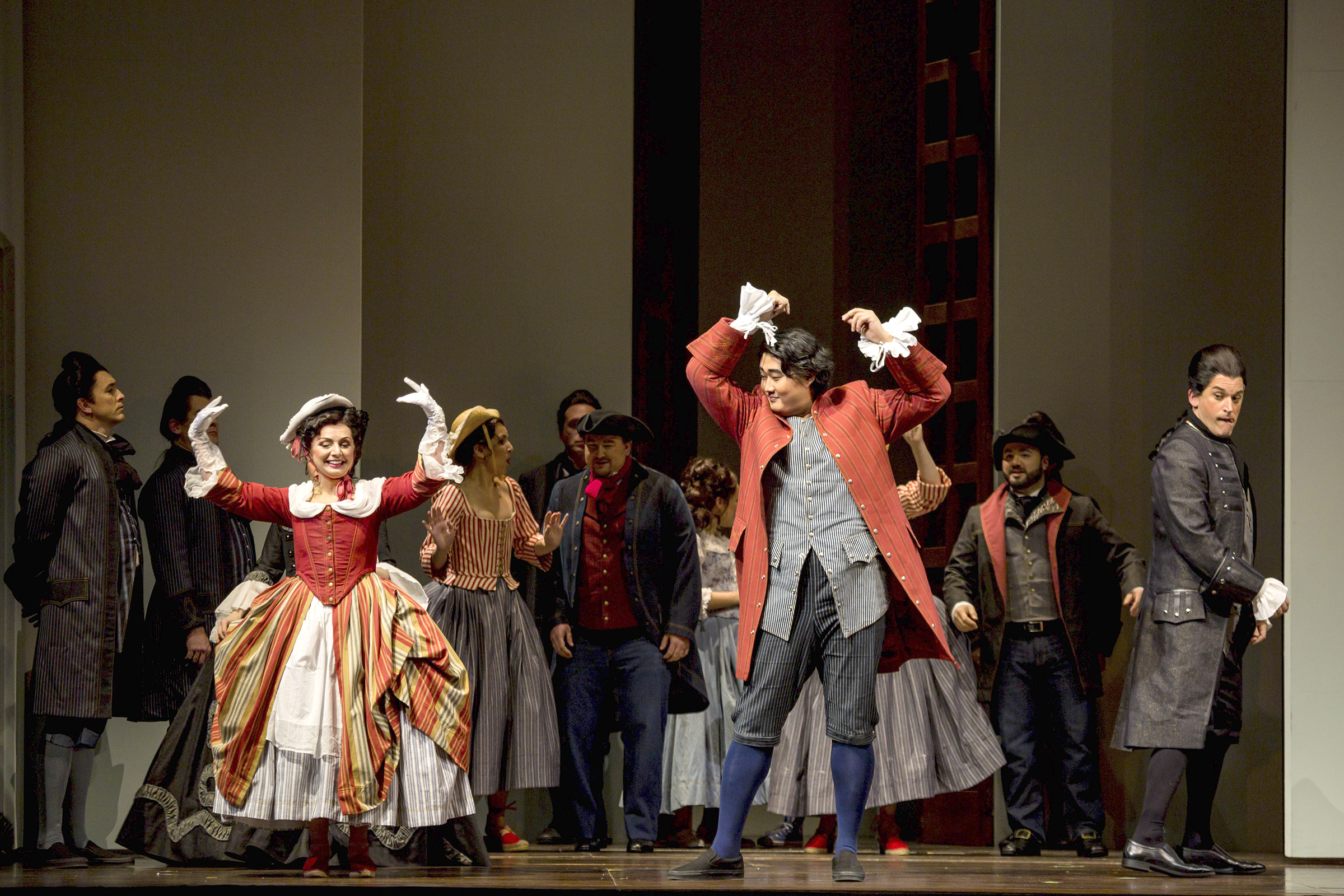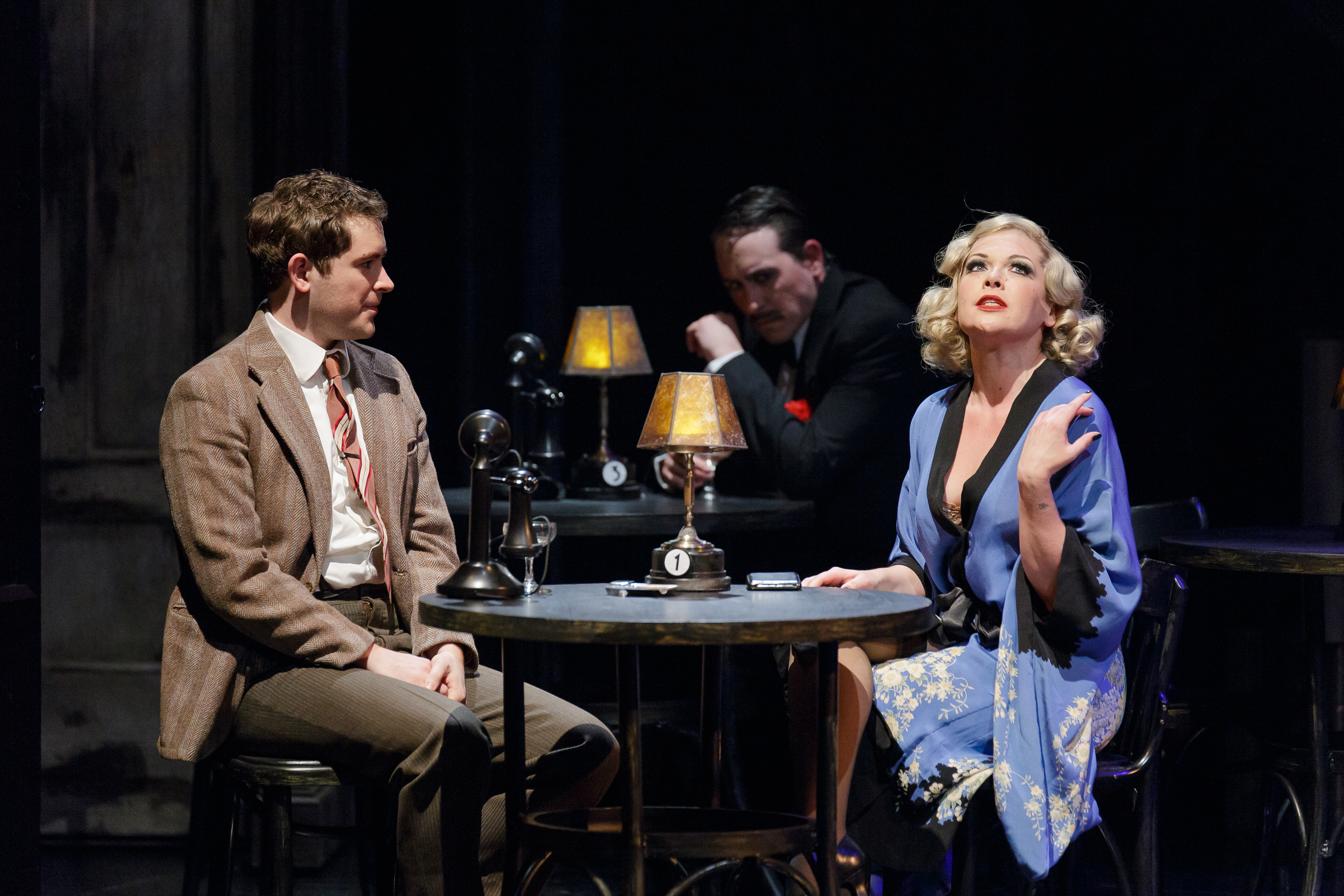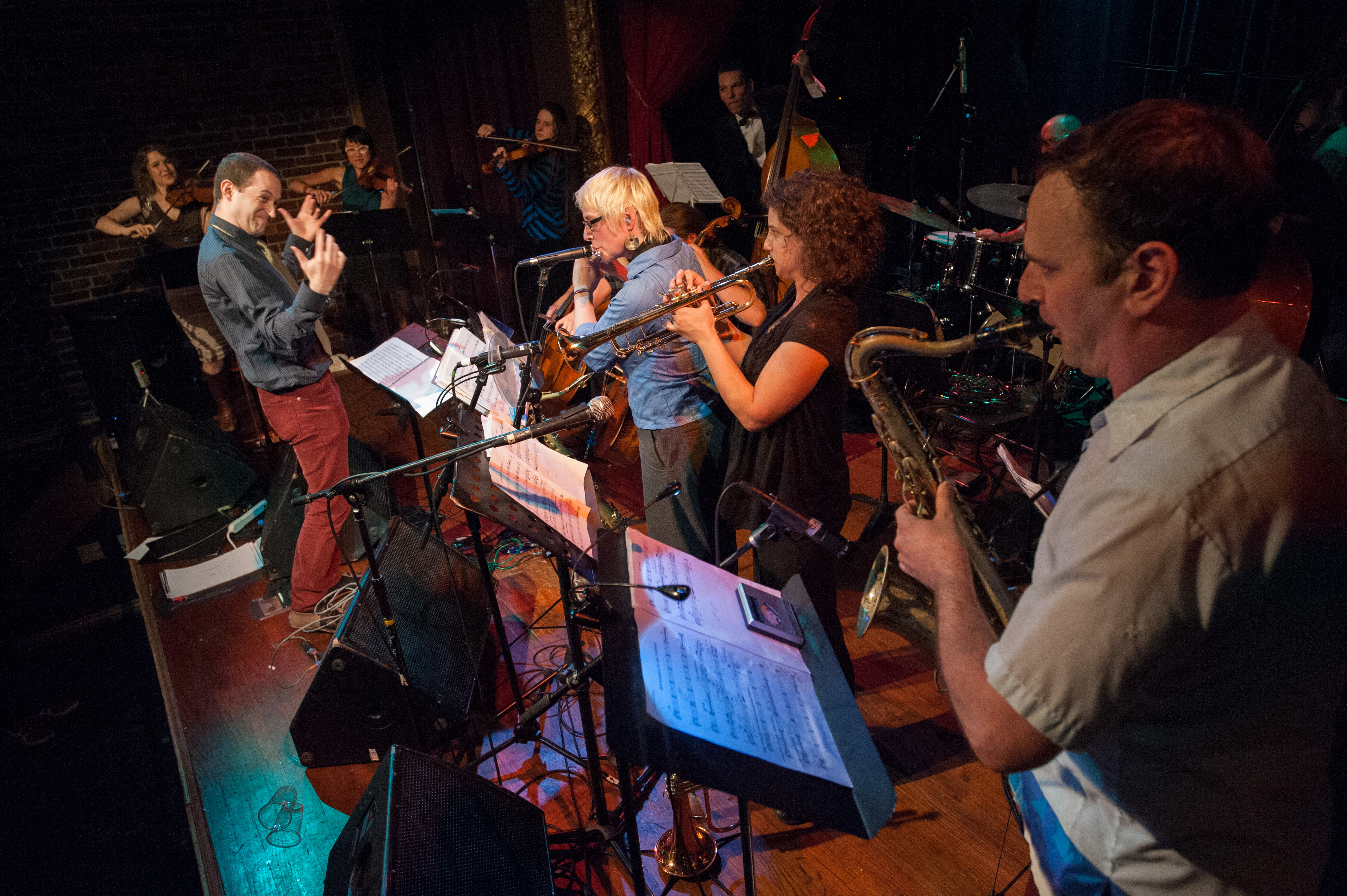Ludovic Morlot, the Seattle Symphony’s chief innovator.Informality, accessibility, openness, a sense of welcoming–these are virtues when it comes to the public presentation of art, and this is the front classical music has been battling on for decades. But one thing classical music has lost sight of is that these also are virtues: insideriness, exclusivity, a sense of discernment, of being in on something the masses can’t appreciate. Though musicians love to high-mindedly cast themselves as the enemies of elitism, these too are part of music’s appeal. For example, Seattle, you may recall, about 20 years ago built an entire musical genre and a world reputation by overtly catering to a niche audience. It was music born in garages and divey small clubs, and repudiation of the mainstream–we get it and they don’t–was its whole raison d’etre.Classical music used to do this–better than anyone, in fact. Where it screwed up was to mix in issues of wealth and class, for decades billing itself as a path to social status and gracious living. The snob factor eventually drove away more fans than it drew, and the fight to counteract that image is just what led to innovative events like Friday night’s Seattle Symphony concerts.They’re attacking the problem of attracting new audiences from both these angles. First up, at 7 p.m., was the debut of the orchestra’s “Untuxed” series: short after-work concerts, one hour in and out, with the players dressed down–just as I recently suggested–in black slacks or jeans and solid-color tops. The ratio of the under-40 audience members to the over-60s seemed to be just about the reverse of what it usually is. Conductor Ludovic Morlot chose an interestingly apropos program–two pieces that demonstrated composers’ struggles, back at the dawn of the public concert in the late 1700s, when suddenly it was a paying lay audience they had to satisfy rather than a court or a congregation. Mozart wrote his Sinfonia Concertante for four winds for Paris, a city with an enthusiastic taste for the superficial; he found onerous the necessity of writing down to it, eventually giving up after several failed attempts. On the other hand, Haydn’s last 12 symphonies, written for a London concert series, represent an ideal meeting of a composer at the height of his powers and a fanbase of cognoscenti. Morlot’s performance of the Symphony no. 103 seemed like just the thing that would have stirred an audience of 1795: grand, imposing, and big-boned as well as witty, generous, warmly human and big-hearted.Phase 2 was the debut of the [untitled] series (brackets theirs), contemporary-music concerts presented even more informally in the Benaroya Hall atrium facing University Street. About 450 listeners overflowed from the few rows of seats set up onto the floor, the stairs, the Grand Tier, and even higher balconies. Quite a few of those over-60s stuck around, among a high percentage of the younger concertgoers the SSO was hoping for. The program, on leaflets of pink paper, included the timings of each work–again, just as I suggested.The music, somewhat ironically, was all 50 years old: pieces from 1962, the year of Seattle’s World’s Fair. In another level of irony, the music represented just the sort of abstruse, experimental, high-modernist idioms recent composers have been less interested in exploring: music too old-fashioned for them yet still too avant for most listeners. The one exception was a sort of hors-d’oeuvre, at 9 p.m.: Gabriel Prokofiev’s 2007 Concerto for Turntables and Orchestra, with soloist Darek Mazzone*. It opened with the sort of fragmented gestures that come from the skittish abruptness of scratch technique (and which, fittingly, were part of the musical lingua franca of 1962). In just one spot were the turntables asked to do something no other instrument can: Mazzone played a recording of a passage of music Prokofiev also gave to the string players, creating a simultaneous interplay between the music performed live and straight versus the same music on vinyl physically manipulated–anticipating, echoing, funhouse-mirroring what the strings were doing. For long stretches later on in the piece, unfortunately, Prokofiev’s nod to hip-hop style rigidified the music, locking it in an endless 4/4 and draining the life from it.John Cage’s Variations III was a modernist shot across the bow: The score, shown on an overhead projector, consists of small circles scattered arbitrarily under a transparency; Morlot “conducted” by drawing lines of varying length (representing loudness) in colored Sharpie (representing different instruments) across the clusters of circles (representing density or sparseness of texture), which the players then interpreted. The result was gorgeous: whimsical, Pollock-like splashes of sound. (Morlot and the SSO also presented the Variations at a free, SRO Seattle Center concert on Sunday–without explanation, and for an audience not there specifically to hear contemporary music. Bewilderment and good-natured chuckling ensued, as opposed to the Friday audience’s delighted thrill.)Maria Mannisto, well-known to local new-music audiences, was the concert’s guest vocalist. In Giacinto Scelsi’s Khoom, her keening, quavering soprano obsessed over a small range of pitches, echoed and shadowed by solo strings or brass in such a way that it was not always easy to tell which was which. Hypnotically captivating, it’s music that demands rapt attention and got it from a lobby full of dead-silent listeners. Earle Brown’s Novara was a study in “mobile form”: brief segments of music, five to a page, four pages for each player, to be played in an order chosen on the spot by the conductor, just as the pieces of an Alexander Calder mobile combine and recombine as it turns in the air. Sensitive to the music’s airy delicacy, the SSO players’ realization was beguiling and all too brief. Xenakis’ Atrees, a visceral gut-punch in other contexts but ham-fisted following the Brown, somehow fell flat; perhaps this is a work that needs a standard concert venue–in which the listeners are confined in the same box as the music–to make its impact, and setting the sounds free in a three-story atrium just diluted them. But like the Cage and Brown works, Morton Feldman’s For Franz Kline (visual arts were a huge influence on American composers in 1962) throve in this space; Mannisto sang from an upper balcony, her voice floating down, siren-like, to rest on the sea bed among the gentle creaks and groans coming from the instruments on the ground floor.The disappointment of the evening was Ligeti’s Poeme symphonique for metronomes: just wind ’em up and let ’em go. It’s a coral reef of thousands of ticks that decelerates and de-coalesces fascinatingly. It really does, take my word for it. It’s hard to trust this piece as a viable listening experience, I acknowledge, and the orchestra didn’t, confining it to a table in the corner of a stairwell, where it became just a feeble rustle in the background as the crowd dispersed.So the SSO’s dual experiment made two things clear. First of all, conventional wisdom is only half right: Concertgoers relish informality–but not because silence is oppressive, paying attention a burden, and being allowed to chat and tweet during a performance is what today’s multitaskers crave. It’s because informality enables, not more casual listening, but deeper, more focused listening. Just as you fidget less in comfortable clothes, the [untitled] audience, palpably absorbed, eager, and silent while prone on the carpet, proved this. Like chamber music at the Tractor Tavern or opera in KeyArena proved it. For some, a concert hall is already an ideal space for concentrating on music, but for others it’s not–and it’s the space, not the concentrating, that keeps them away.The second point, the appeal of insideriness, really crystallized as I was returning just before 9, when an usher tore my ticket and directed me to another lady who wrapped a pink adhesive strip around my arm. Of course: What, after all, is a wristband but a way to distinguish who’s in from who’s out? Along with making concerts seem less stuffy and all the rest of it, the classical-music world needs to find a way to make them seem like something you have to be a part of–and that’s just the atmosphere the SSO was able to create on Friday night (even with half-century-old music). There was a buzz in the air even beyond the fun of the turntables and the visuals and Morlot’s charming spoken intros (who doesn’t love he way he refers to the building as b’NAHroialle?)–a sense that anyone not there was missing out. Let’s call it “the wristbanding of classical music,” and let’s see if the Seattle Symphony can spread this feeling to everything they do.*CORRECTION: The DJ mentioned in the concert program as soloist for the Prokofiev was Darek Mazzone, but the one who performed instead on Friday night was DJ Madhatter. This change was announced at the concert, but I missed it. Apologies. Also, the wind soloists in the Mozart and throughout [untitled] were members of ICE (International Contemporary Ensemble). They more than deserve a mention. –GB
More Stories From This Author
Capitol Hill Block Party Artist Panel Series 2019
The Capitol Hill Block Party Artist Panel Series 2019 is free (no festival wristband required), all-ages, and takes place from…
By
Seattle Weekly • July 9, 2019 11:10 am
Golden Idols will release new EP
Seattle quartet returns with ‘Uneasy’
By
Seattle Weekly • June 24, 2019 5:30 pm
Travis Thompson, Wolf Parade headline Fisherman’s Village fest
The Everett Music Initiative festival, May 16-18 in Everett, will showcase more than 50 acts.
By
Evan Thompson • March 18, 2019 12:00 pm






